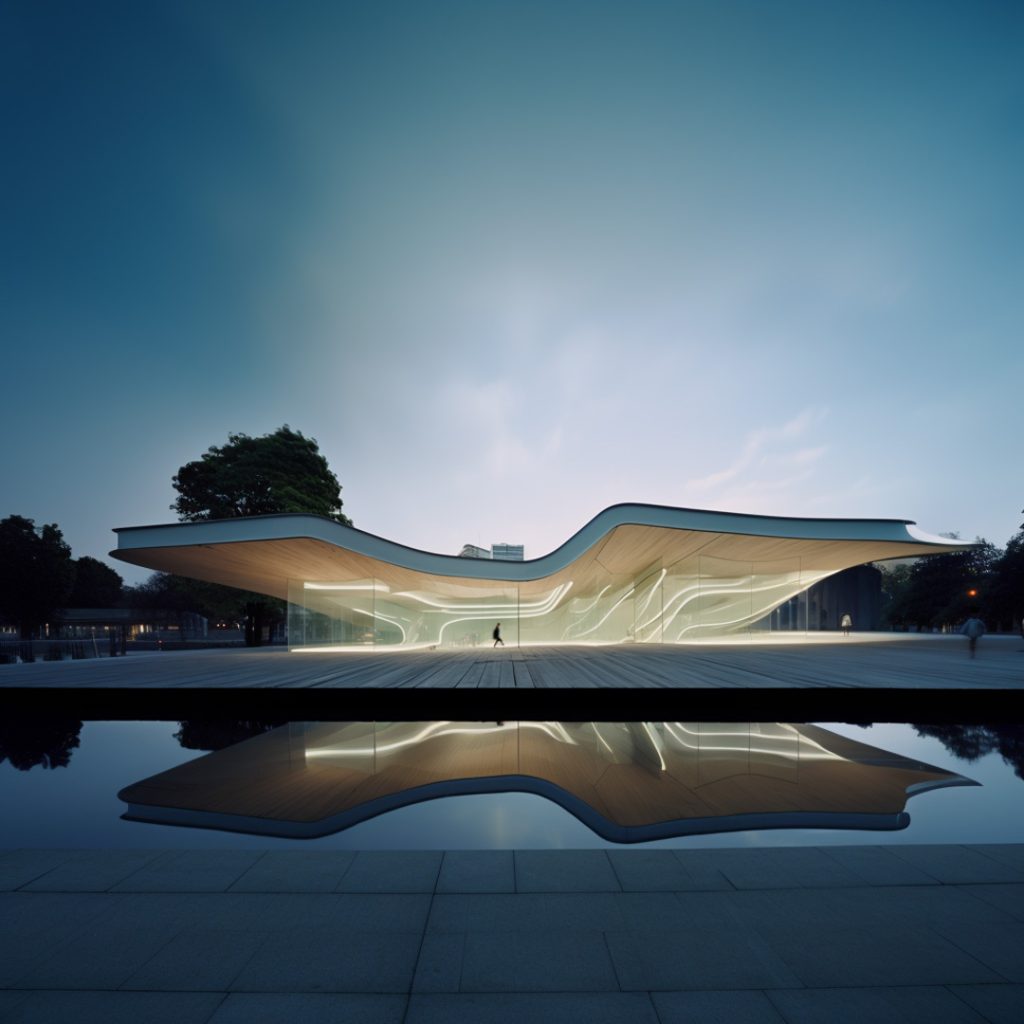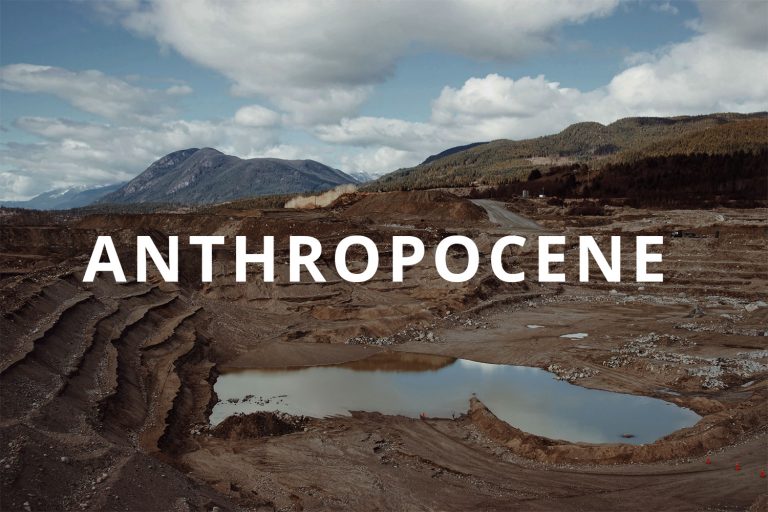
Massimo Russo is an architect and designer who is based in Italy. Recent studies on “beauty algorithms” are finding application and synergy within planning and design, particularly in the field of stone construction. Artificial intelligence is also being implemented to define new creative scenarios.
“The words have great power; they shape thoughts.” Massimo Russo has known this phrase for a long time by psychologist Jerome Bruner, founder of cultural psychology. This thought arises within his theory of storytelling, a different field, but he found it exemplary in describing how we relate to AI. A prompt, a sequence of elementary words, interrogates an intelligence, generating images, more precisely, always citing Bruner, “building visions” and taking “shape.” Singular analogy.

Seeing the first images generated by Midjourney’s artificial intelligence online, he immediately wanted to understand. The initial approach to AI was disorienting for someone like him who deals with parametric design. There’s no rigor of interfaces in mathematical and parametric software but an environment more akin to a social network. Witnessing inside Midjourney the generation of images, graphics, design, and architectural projects, which typically require deep knowledge, generated with a simple prompt with a phrase, initially deeply unsettled me.
In an instant, Massimo Russo saw immense potential. He was disoriented. He thought: everything will be different. AI speaks to everyone, even the foolish, and perhaps will enable them to compete with those who have devoted a lifetime to studying, visionary ability, and designing.
Yes, indeed, for now, Midjourney can only generate images. It’s not yet capable of generating the corresponding three-dimensional model. But for how long? There are already initial attempts in this direction. Considering the impressive developmental capacity of AI, maybe it will take a few years or perhaps a few months. Once the 3D model is generated, it could control integrated aspects like structure, energy management, costs, etc. In other words, it will take charge of the entire process. AI is there, at the top. It’s at the peak of the process; it’s the creative moment. It has chosen the best place, and when it connects to the underlying dimension of data control of BIM, it will be a total revolution. He closed everything and turned away for a while.

Over time, Massimo Russo has read very severe judgments juxtaposed with opinions of great enthusiasm. In Italy, some architects even speak of artificial stupidity; certainly, for better or worse, it’s a topic becoming increasingly central, often igniting passions.
After a while, Bruner’s beautiful phrase about the power of words to generate visions and forms came back to mind. In reality, He had dedicated very little time to understanding AI. It rekindles in him an interest in forming his own evaluation without preconceptions. He decided to delve deeper into the study of AI. He places a condition before any judgment: the necessity of frequentation. The word “frequentation” implies the need to understand it thoroughly. He attempted to implement it into his daily work as an architect. Initially, the results were disappointing compared to specific and stringent requests on how to design certain spaces. The responses were often exaggerated, off-topic, and not as exhilarating as the initial approaches.
Only with patience and dedication to a lot of time did he understand the most effective working methods and prompts. AI is characterized by the ability to provide many responses very quickly. Therefore, it’s essential to have an attitude to control this data volume. Among the countless possibilities, one must build a statistical approach to intuit which path will be the most effective for subsequent iterations. And precisely this continuous “iteration,” indicating strict requests, applying a logic of continuous approximation to the final result, is the right key to achieving effective “collaboration” with AI.

The human mind tends to work with a limited amount of information. In contrast, AI, especially during its development phase (the most crucial where it “learns” the distribution of data it needs to develop), is trained to handle a vast amount of data and knowledge, delving its expertise into the vast world of data available on the internet. In this sense, we are fundamentally different. Philosopher Friedrich Nietzsche stated: “One should not know more about a thing than one can creatively use.” The human mind can be creative with a significantly smaller amount of data than what AI has at its disposal and requires. We must aim to simplify its intrinsic complexity and manage its bulimic productivity. Russo believes good familiarity is based on the right iteration time, stimulating our creativity without compromising it and avoiding being overwhelmed by the infinite number of solutions it proposes.
AI tries to follow and anticipate us in the continuous relationship built through various prompts. This ability to follow and anticipate you is a characteristic already present in other search algorithms, like Google or Pinterest, which can infer from user history their preferences and suggest texts or images, potentially more pleasing aesthetic solutions. However, they refer to images or texts already present online. AI seems if well interrogated, to introduce the ability to provide new answers.
But is it always like this? Massimo Russo doesn’t think so. At the moment, he feels that AI’s capability is not immediate. In other words, AI speaks to everyone but can produce high and original iterations, typically under certain conditions, namely by interacting well with other intelligences.

The various projects He has published on Instagram tend to trace a visible path that tends to confirm this thesis. Some of these projects developed through interaction with artificial intelligence will be realized. Most of them try to indicate possible scenarios. As an architect, He is experimenting with the possibility of designing with the “verb” and not just with the “sign.” The importance of experimenting and continuously publishing and sharing results is a foundational research element. The quantity of elaborated works indicates a direction of research that provides a longitudinal reading of a possible collaboration with AI. These projects indicate the limits and potentials of a continually evolving reality. Individual posts, isolated, don’t make much sense for understanding what is happening, neither for expressing favorable opinions nor for severe criticism.
A social platform like Instagram is currently the ideal place for this comparison and sharing, capable of managing a vast amount of data and images; a dynamic magazine, open to everyone, experimenting with the limits and potentials of AI in the field of artistic creativity, design, and architecture.
Typically, the quality of various images visible online is not always very high. Indeed, Midjourney tends to generate a dull and often exaggerated aesthetic over time. However, He believes that the responsibility is not all on AI but largely depends on the attitude of those interrogating artificial intelligence.

During this interaction with AI, he asked himself various questions. Is Midjourney’s intelligence singular and central? Does he always interact with the same person or with someone different each time, or perhaps even with multiple people simultaneously?
AI ‘godfather’ Geoffrey Hinton talks about it as if it were an intelligence indissolubly linked to an entire community, not to a single individual, as we typically imagine. Geoffrey Hinton states: “It’s as if you had 10,000 people, and every time each of them learned something, everyone automatically knows it.” Hence, it’s as if the knowledge and intelligence of a single scientist were fully shareable by the rest of humanity, which, in turn, instantly shares its knowledge. One can sense the dizzying growth capacity of AI. Furthermore, is AI the mind of a young mathematician, artist, prodigious child, or conscious adult?
Some questions are daunting and may even seem naive. Still, all that’s left is to relate to this new reality, which in other fields, like medicine, seems to be an irreplaceable support in clinical practice, risk assessment, and diagnostics, benefiting many.

Fears in the artistic and creative fields are greater and quite different. According to American philosopher Noam Chomsky, AI is “the greatest theft of intellectual property; it’s a plagiarism software because it doesn’t create anything but copies existing works of existing artists, altering them enough to evade copyright laws.” In fact, it should be noted that all AIs have a common initial “training” phase that determines the goodness of their algorithms. Midjourney has raised more than a few criticisms because it was trained on copyrighted artists’ works, which it has assimilated and reproduced in various forms without issues. However, this stance of philosopher Noam Chomsky is not entirely convincing. Throughout history, there has always been constant contamination and stories of plagiarism in art, literature, and sciences, which underlie subsequent original advancements and progress.
There’s a fascinating article by philosopher Francesco D’Isa titled “Plagiarism or Inspiration.” He reminds us that the Latin poet Martial already lamented those who imitated his verses. During some of his lectures at Oxford, Giordano Bruno was accused of plagiarism for almost entirely reproducing works by Marsilio Ficino in his writings. In Mozart’s “The Magic Flute” Overture, there are “very clear references” to themes by Cimarosa and Clementi. And so on.

To conclude, what he has briefly presented so far refers to AI, particularly Midjourney, the form of artificial intelligence that is simpler to use for a less specialized range of users from a computer perspective, such as architects, designers, and graphic artists. However, new AIs, which have different variables, are becoming available, even if they are more complex to manage. We are entering a period of significant conceptual fluidity.
For instance, Stable Diffusion is open-source; its code and weights have been publicly released. It’s powerful and free. The Ludwig Maximilian University of Munich developed its basic architecture. It would certainly have pleased the French intellectual Condorcet, who in his “Fragments sur la liberté de la presse” (1776), argued that work, as a vector of ideas, should not be considered private. An initial intuition of open source. However, at that time, the concept of intellectual rights prevailed, as advocated by the Enlightenment philosopher Diderot, and thus, on January 13, 1791, the Le Chapelier law was enacted to guarantee copyright.
Midjourney’s code, on the other hand, is proprietary, although many believe it is based on Stable Diffusion models. Midjourney is only accessible via the web and is essentially a paid service. Stable Diffusion, on the other hand, can be downloaded and installed on your own PC and is genuinely free.

He has already installed this new AI, a procedure not at all straightforward and not exactly within everyone’s reach. He doesn’t want to dwell on describing its complexity, its incredible potential, which he finds remarkable in “expert hands.” Instead, he wants to represent just one detail. He launched the first prompt line to generate the first image with Stable Diffusion but unplugged his PC from the network beforehand. The AI worked, returning its realistic and incredible image, perfectly responding to the parameters entered. He was profoundly impressed. Therefore, there isn’t just an AI like Midjourney, located on a remote and powerful server, to be interrogated via the internet. Now, the “whole” is in my machine, on my desk, in my architect’s studio. He turned off the PC and must say that he has observed it differently since that moment.
He certainly doesn’t believe that my computer has feelings or that it is sentient, as Blake Lemoine, fired from Google, claimed, but his PC has certainly become something else. What? He doesn’t know.
*The text was written by Massimo Russo and reviewed by the PA Editorial Team. Also, all images were generated by him.







































